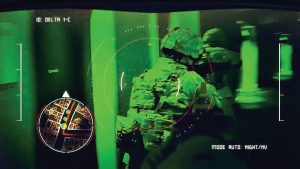Physical Security

Stockpile Management
Physical Security and Stockpile Management (PSSM) involves providing the necessary physical infrastructure and national capacity in order for states to safely secure and account for weapons and ammunition under government control. This involves the construction and rehabilitation of armouries and ammunition stores in line with international standards as well as the design, implementation and training of national agencies to effectively manage and monitor their stockpiles.
Stockpile management of weapons is the term used to describe those procedures and activities that are necessary for the safe and secure accounting, storage, transportation and handling of small arms and light weapons. ASPIS Weapons Management Solutions are fully compliant to the UN ISACS 05.20 Standards

The United Nations ISACS standards include key standards pertaining to weapons storage that should be followed, where possible, by organisations engaging in PSSM activity. You can find a report with preliminary findings here;
KEY POLICY CONSIDERATIONS AND FINDINGS FROM UNIDIR
ASPIS.SYSTEMS and UN Standards : ISACS 05.20



One of the main sources of illicit small arms and light weapons are inadequately managed stockpiles, from which weapons leak, through loss and/or theft, into the illicit market. ASPIS.SYSTEMS provides guidance on the safe, secure, effective and efficient management of stockpiles of small arms and light weapons, in support of an overarching small arms and light weapons control programme.

The effective and efficient management of weapon stockpiles is, therefore, an essential element of any small arms and light weapons control programme, since it
- reduces the risk of loss and theft of weapons (and, thereby, their illicit proliferation), and
- can be used to identify obsolete and/or surplus weapons, as well as future procurement requirements.The systematic control of weapon stockpiles is in keeping with a philosophy of ‘due care’ and requires that States take a pro-active, rather than a re-active, approach to ensuring that weapons are adequately accounted for and secured
- is the cornerstone of any effective Homeland Security solution, tracking illicit movement of weapons in defined enforced security perimeters (geofencing)
A typical armoury inventory could take as much as 7 hours, whereas the accuracy of any audit is at risk, when missions and tasks interfere with the audit process, often carried out even manually and therefore prone to human errors. ASPIS allowed us to bring this down to 7 Minutes.
ARGENTINA NAVAL FORCE COMMAND
 Weapons Tracking
Weapons Tracking 

